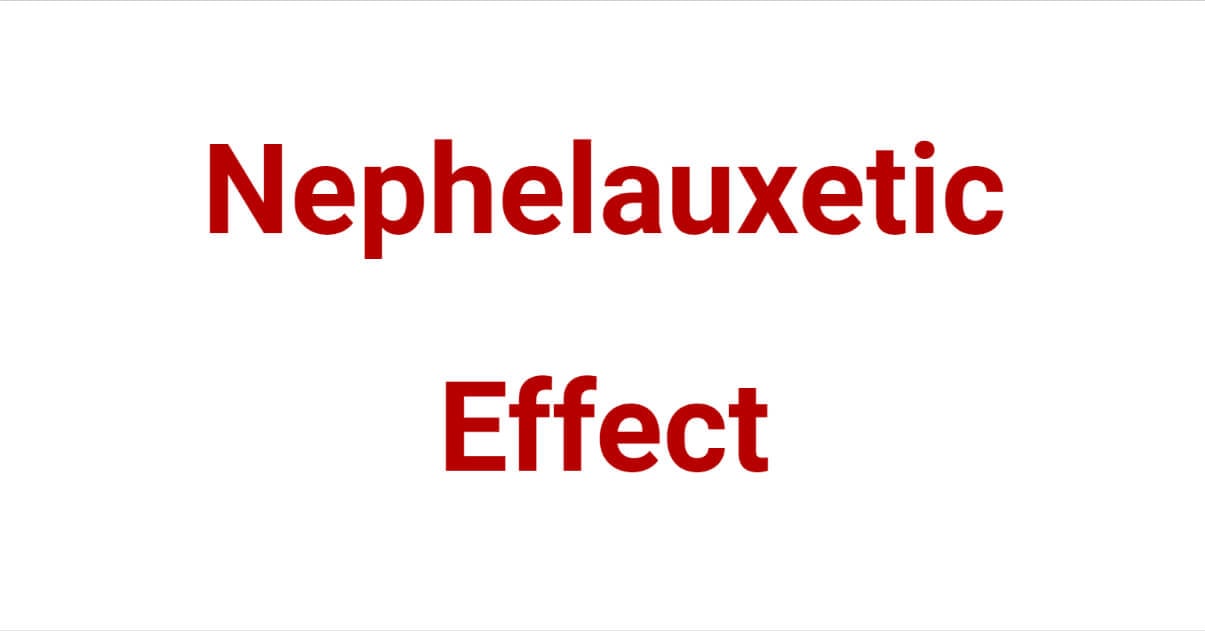The nephelauxetic effect refers to the expansion of the metal ion d-electron cloud.
Coordination Compounds are chemical species that contain a central metal ion surrounded by ligand groups that are chemically linked to it. In free metal ions, the electrons present in the d orbital of the metal cause repulsion between the electrons. Bonding of metal with ligands expands the d orbital of the metal resulting in a decrease in the inter electron repulsion. This is known as the nephelauxetic effect.

It is assumed that in coordination compounds, the overlapping of metal ion d-orbital with ligand orbital results in the expansion of the d-electron cloud. The overlap of the metal ion d-orbital with the ligand orbital provides a path for the d-electrons to escape from the metal ion and move to the large molecular orbital. The effect of ligand in expanding the d-electrons cloud is called the Nephelauxetic effect.
Nephelauxetic series
The ligands can be arranged based on their strength to cause electron cloud expansion. This series is known as the nephelauxetic series. The order of ligands based on their strength of nephelauxetic effect are as follows:
F < H2O < dmf < Urea < NH3 < oxalate ~ en < NCS– < Cl– ~ CN– < Br– < N3 < I– < dtp– < dsep–
dtp = diethyl thio phosphate anoin
dsep= diethyl selenophosphate anion
Here, hard ligands are found at the bottom of the series while soft ligands are placed at the top of the series.
The magnitude of the nephelauxetic effect is expressed in the term of nephelauxetic ratio (β). It refers to a decrease in Racah inter-electronic repulsion parameter.
β = Interatomic repulsion parameters for metal ions in the complex / Interelectronic repulsion parameter in free ion
i.e., β=B’/B
The value of β is always less than 1.
This effect favors the greater delocalization of the d-electrons in the complex, indicating the presence of covalency in coordinated metal complexes.
References
- https://chemisfast.blogspot.com/2019/07/nephelauxetic-effect-and-nephelauxetic.html?m=0
- https://chem.libretexts.org/Bookshelves/Inorganic_Chemistry/Map%3A_Inorganic_Chemistry_(Housecroft)/20%3A_dBlock_Metal_Chemistry__Coordination_Complexes/20.09%3A_Evidence_for_Metal-Ligand_Covalent_Bonding/20.9A%3A_The_Nephelauxetic_Effect
- https://chemistnotes.com/inorganic/nephelauxetic-effect-in-inorganic/
